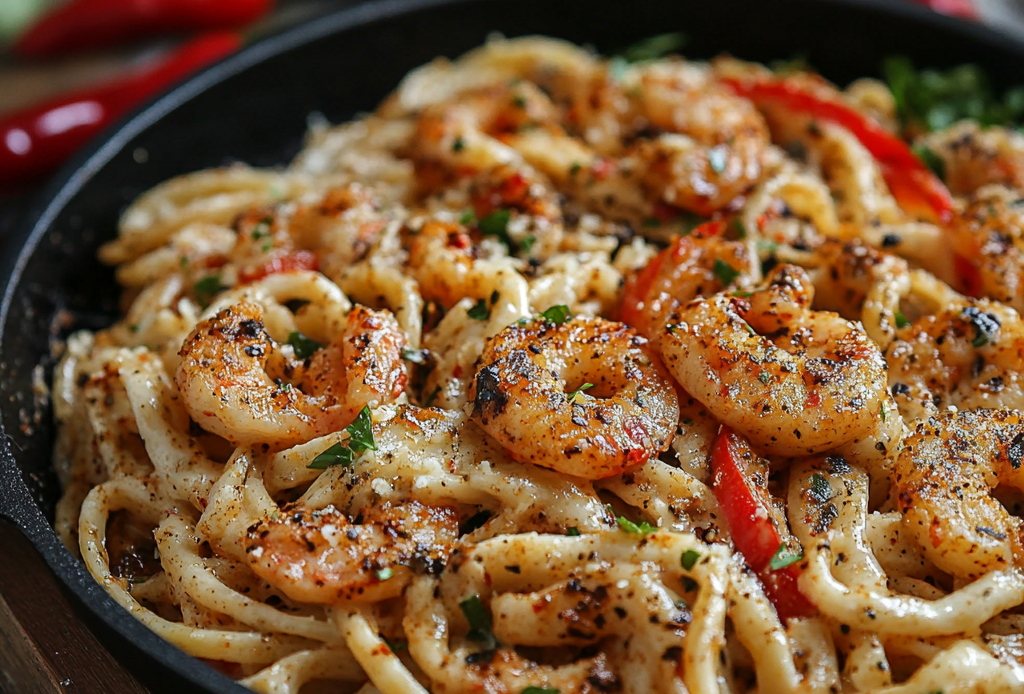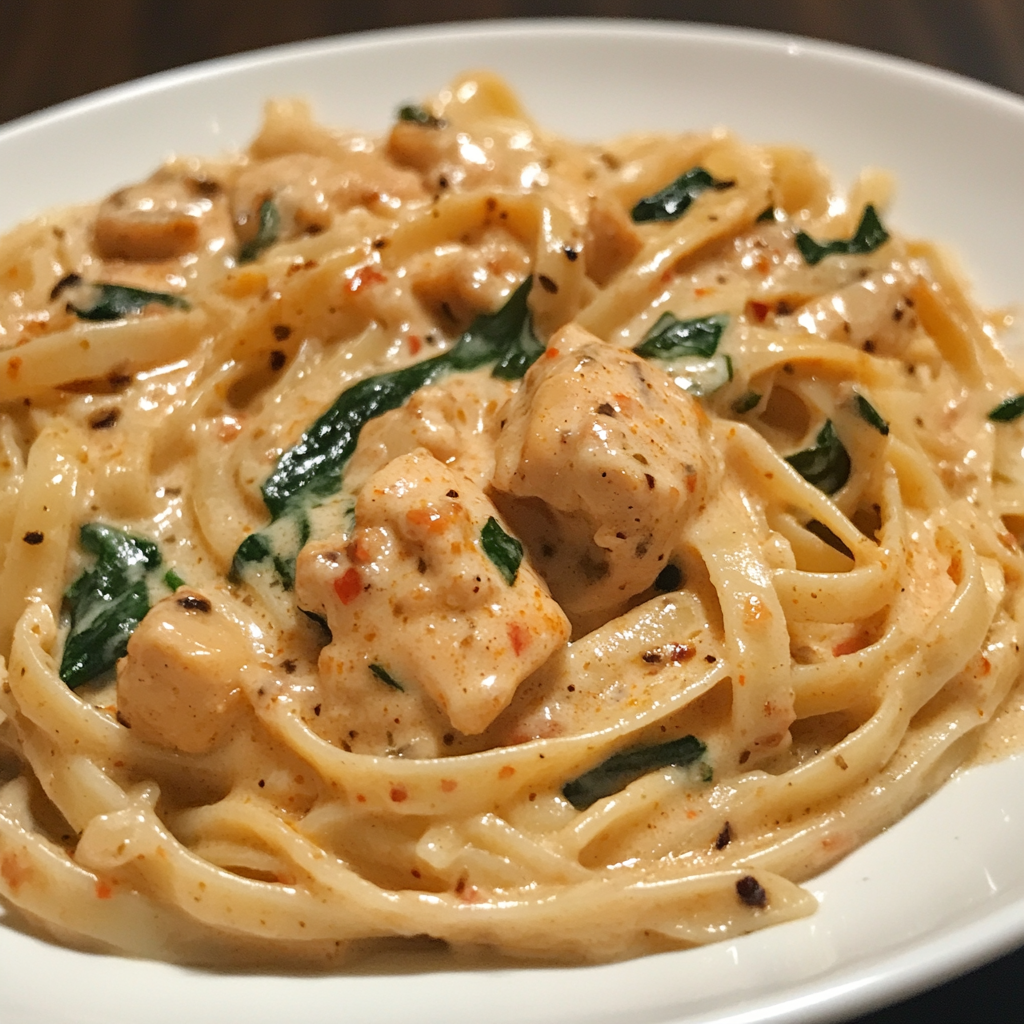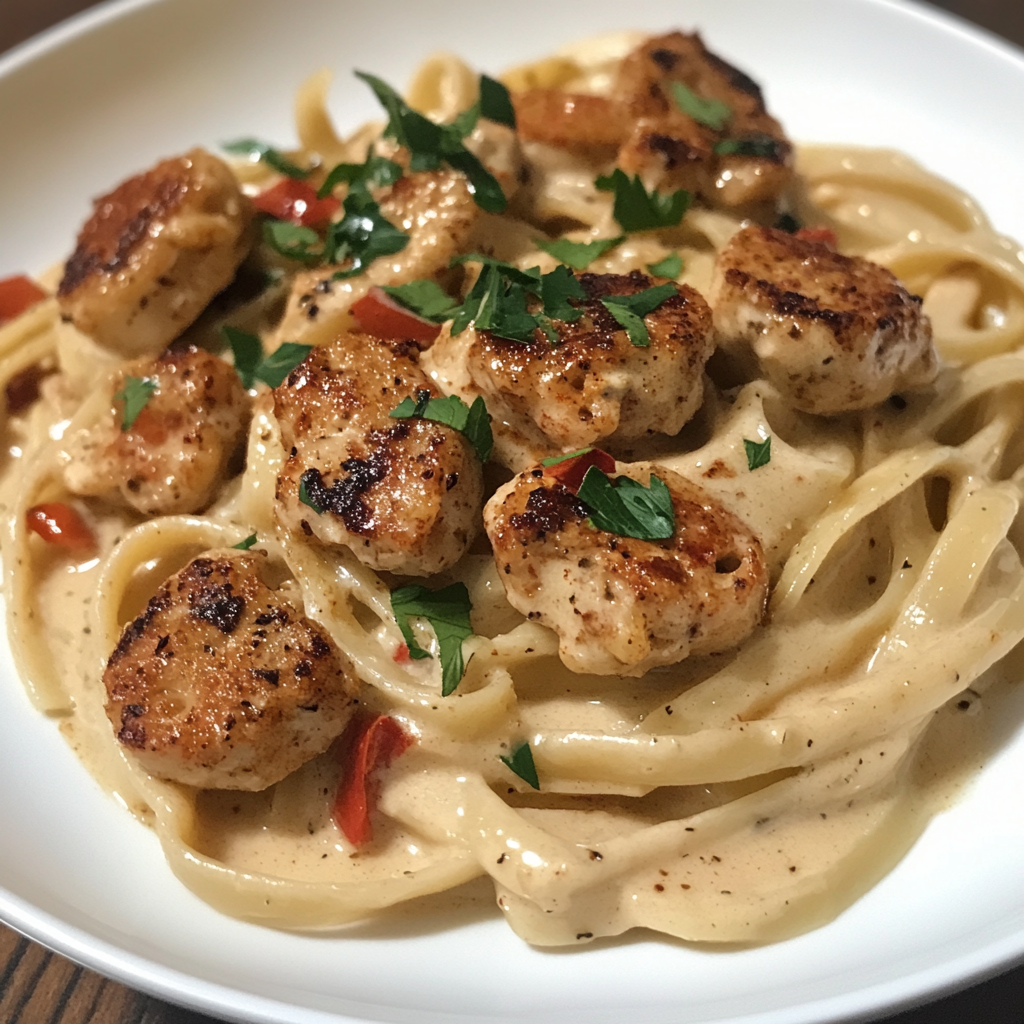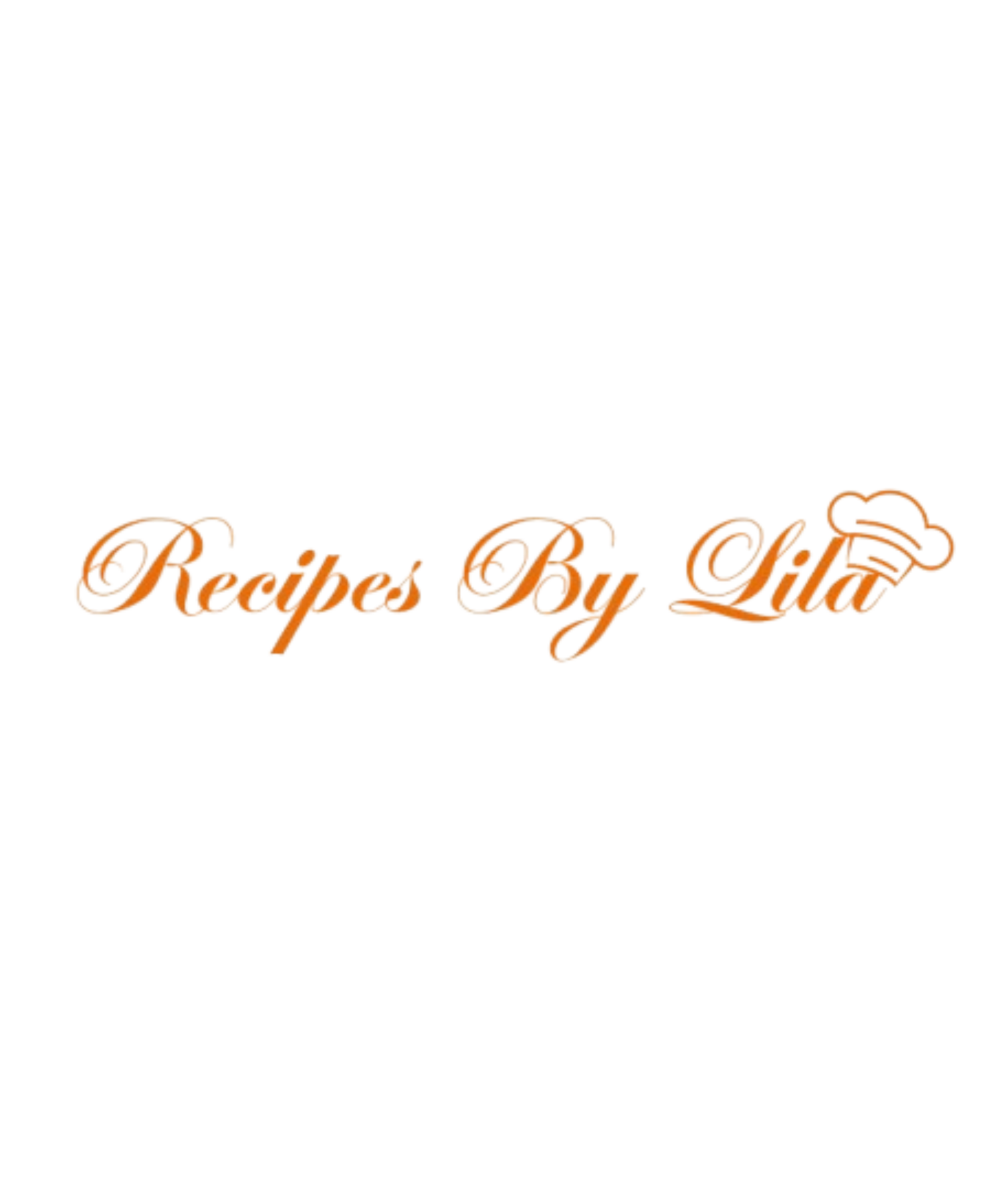
Cajun Alfredo Sauce is a mix of creamy Italian Alfredo and bold Cajun spices. It’s rich and fiery, perfect for pasta or proteins. This dish combines comfort and adventure in one pan.
In American fusion cuisine, this sauce makes simple dishes taste like they’re from a restaurant. It’s great over shrimp, chicken, or zucchini. Learning to make it adds versatility to your cooking skills.
Key Takeaways
- Cajun Alfredo Sauce merges Italian creaminess with Cajun heat for a dynamic taste.
- Key ingredients include butter, heavy cream, and a blend of cayenne, garlic, and paprika.
- It works with proteins like chicken, seafood, or vegetables for balanced meals.
- Simple steps and common pantry items make it accessible for home chefs.
- This sauce elevates everyday meals into bold, flavorful creations.

What Makes Cajun Alfredo Sauce Special
Cajun Alfredo Sauce combines Italian comfort with Louisiana’s spicy flavors. It’s more than just a mix of tastes—it’s a blend of cultures. To understand its uniqueness, let’s look at its origins.
The Origins of Cajun Cuisine
Cajun cooking started with Acadian settlers in Louisiana. They used local foods like crawfish, okra, and smoked sausage. This led to a style known for its rich, smoky, and spicy flavors.
When you mix these with Alfredo’s creamy base, you get something both comforting and exciting.
Fusion of Italian and Cajun Flavors
Alfredo sauce is made with butter, cream, and Parmesan. Cajun alfredo adds spices like cayenne, smoked paprika, and garlic. This creates a sauce that’s smooth yet bold.
It’s perfect for pasta, chicken, or seafood. The sauce is both cozy and adventurous.
Key Flavor Components
The “holy trinity” of Cajun cooking—bell peppers, onions, and celery—is key. For cajun alfredo sauce, these veggies mix with:
- Smoked paprika for smokiness
- Cayenne pepper for heat
- Garlic powder and thyme for depth
Together, they give the sauce its unique kick without losing its creaminess.
Essential Ingredients for Authentic Cajun Alfredo Sauce
Mastering the cajun chicken alfredo recipe starts with the right ingredients. Each part is key to balancing creaminess, heat, and depth. Here’s what you need for a great sauce:
Base Dairy Components
Heavy cream and unsalted butter are the base. Their fat content makes the sauce smooth. For a lighter version, use half whole milk and keep the butter for richness.
Traditional Cajun Seasonings
Cajun spice blends are essential for flavor. Key ingredients include:
- Paprika (smoked or sweet)
- Cayenne pepper (adjust to taste)
- Garlic powder and onion powder
- Thyme and oregano
- Sea salt and freshly ground black pepper
Start with ½ tsp cayenne and adjust to taste. This avoids overpowering the dish.
Fresh vs. Dried Herbs
Choosing between fresh and dried herbs depends on the dish. Here’s a comparison:
| Herb | Fresh | Dried |
|---|---|---|
| Thyme | Finely chop 1 tbsp for garnish | Use 1 tsp for cooking |
| Oregano | Use as a finishing touch | Blend into sauce base |
| Parsley | Use as garnish for brightness | Not recommended—loses flavor when dried |
Quality Cheese Selection
Hard cheeses like aged Parmesan and Pecorino Romano add sharpness. Avoid pre-shredded cheese for a smooth sauce. Here’s a quick guide:
Grate cheese yourself for maximum meltability and flavor.
- Use 1 cup freshly grated Parmesan
- Add ¼ cup Romano for depth
- Optional: 2 tbsp grated Asiago for complexity
Substitute ½ cup of cheese with a dash of cream for creamier results in your cajun chicken alfredo recipe.
Equipment You’ll Need
To make the creamy cajun chicken pasta recipe, you need the right tools. Start with a sturdy skillet, like stainless steel or cast iron, for even heat. A sharp chef’s knife is key for quick, precise cutting.
Don’t forget measuring cups and spoons. They help you get the flavors just right. A whisk is crucial for mixing cheese into a smooth sauce. Use a silicone spatula to stir without scratching pans.
- Skillet: Opt for a heavy-bottomed pan to prevent scorching delicate sauces.
- Chef’s knife: Use it to dice onions, mince garlic, and slice proteins evenly.
- Whisk: Essential for emulsifying cheese into the base without clumps.
- Measuring tools: Precision ensures the right spice ratios for authentic Cajun notes.
- Spatula: Silicone or heat-safe options avoid scratching nonstick surfaces.
If you don’t have cast iron, a regular frying pan will do. If you don’t have a whisk, a fork will work, but it takes longer. Always have your tools ready before you start. Once you’re done, store leftovers in airtight containers. Get ready to make this dish a hit.
Step-by-Step Guide to Making Cajun Alfredo Sauce
Turn simple ingredients into a rich cajun alfredo sauce. Follow these steps to get the perfect mix of spice and creaminess.
Preparing Your Aromatics
- Chop 1 cup of onions, 1 green bell pepper, and 1 stalk of celery into small dice. This trio forms the Cajun “holy trinity” base.
- Sauté vegetables in butter until tender, then add minced garlic. Cook until fragrant but not browned.
Creating the Perfect Roux
Whisk 4 tbsp melted butter with 3 tbsp all-purpose flour in a saucepan. Cook over medium heat, stirring constantly until the mixture turns the color of parchment paper. Avoid burning—this roux will thicken your cajun alfredo sauce without lumps.
Incorporating Dairy Elements
- Slowly pour in 2 cups heavy cream while whisking vigorously. Bring to a gentle simmer.
- Reduce heat to low once the sauce thickens enough to coat the back of a spoon.
Adding Cajun Seasonings
- Stir in 1 tsp smoked paprika, ½ tsp cayenne pepper, and 1 tsp dried thyme.
- Let spices bloom in the roux for 2 minutes to activate flavors without overwhelming the base.
Final Consistency Adjustments
Test thickness by drizzling a small amount on a chilled plate. If too thick, add warm milk 1 tbsp at a time. Taste and adjust salt, then stir in 2 cups grated Parmesan until melted.
Once ready, this cajun alfredo sauce should cling to pasta strands without separating. Aromatics and spices should harmonize, with a slight kick from cayenne balanced by creamy dairy. Serve immediately or keep warm on low heat while finishing dishes.
The Perfect Cajun Seasoning Blend

The cajun chicken alfredo recipe relies on a special mix of spices. This blend must balance heat, depth, and complexity. To get it right, start by learning the key spices that make up this flavor.
Essential Spices for Authentic Flavor
Start with 1 tablespoon sweet paprika for a smoky sweetness. Add 1 teaspoon smoked paprika to enhance umami. For heat, use ½ teaspoon cayenne pepper, but balance it with 1 teaspoon garlic powder and 1 teaspoon onion powder.
1 teaspoon dried oregano and ½ teaspoon dried thyme bring freshness. Finish with 1 teaspoon black pepper and 1 teaspoon salt. Mix everything in a bowl and keep it in an airtight container.
Heat Level Customization
- Mild: Reduce cayenne to ¼ teaspoon
- Medium: Use full ½ teaspoon cayenne
- Spicy: Double cayenne to 1 teaspoon
Try the blend on a crouton before adding it to the sauce. This helps you get the heat just right.
Making and Storing Your Own Blend
Keep your blend in glass jars, away from sunlight, for up to six months. For the cajun chicken alfredo, use 2 tablespoons per batch. You can also use it on roasted veggies, shrimp étouffée, or as a dry rub for grilled meats.
A chef’s tip: “Layer spices like notes in music—start subtle and build intensity gradually.”
How to Achieve the Ideal Creamy Texture
Getting the silky texture of a creamy cajun chicken pasta recipe starts with emulsification. It’s about blending cheese and dairy smoothly without separating. Here’s how to achieve it:
- Control the heat: Keep the sauce at a gentle simmer. Boiling can make it greasy or grainy. Stir constantly to prevent burning.
- Incorporate cheese slowly: Add shredded Parmesan one handful at a time, stirring until melted before adding more. Remove the pan from heat briefly if the sauce gets too hot.
- Use starch wisely: A proper roux or a splash of pasta water acts as a natural thickener. For creamy cajun chicken pasta recipe perfection, reserve ½ cup pasta water before draining.
| Problem | Solution |
|---|---|
| Sauce too thin | Whisk in a butter-roux slurry or add more cheese |
| Grainy texture | Strain cheese before adding or blend sauce briefly with an immersion blender |
| Oil separation | Whisk vigorously while reheating, adding a dash of heavy cream |
“Texture is the soul of Cajun cooking. Treat your ingredients like dance partners—move in rhythm, never rush.” – Chef Paul Prudhomme, pioneer of modern Cajun cuisine
When reheating leftovers, stir in a splash of milk or cream to restore creaminess. Always adjust seasoning before serving, as reduced sauce intensifies flavors. Proper technique turns your creamy cajun chicken pasta recipe into a velvety masterpiece every time.
Pairing Your Cajun Alfredo Sauce with Proteins
“The essence of Cajun cooking is marrying bold flavors with the right proteins,” says chef Paul Prudhomme. “Your cajun chicken pasta alfredo shines brightest when paired thoughtfully.”
Cajun chicken pasta alfredo becomes a full meal with the right protein pairings. Here are some great options to try:
Classic Cajun Chicken Options
Chicken is a perfect match for the bold flavors of cajun chicken pasta alfredo. Here are a few ways to prepare it:
- Blackened chicken: Sear boneless breasts in a cast-iron skillet with a blend of paprika, garlic powder, and cayenne. Slice thinly to mix evenly into the sauce.
- Grilled options: Marinate thighs in buttermilk and Cajun spice mix before grilling. Serve sliced over pasta to balance smokiness with Alfredo’s richness.
- Sautéed strips: Cook bite-sized pieces in the sauce’s butter base before adding cream. This method deepens umami notes.
Seafood Variations
Seafood adds a fresh twist to the dish. For shrimp, toss raw tails into the sauce last 2 minutes to avoid rubberiness. Crawfish tails work best when added at the end of sauce prep. A New Orleans-inspired medley combines shrimp, Andouille sausage, and scallops—simmer all but scallops, fold in at serving.
Vegetarian Alternatives
For plant-based meals, sautéed mushrooms (button or cremini) mimic meat’s texture. Toss with the sauce before adding roasted red peppers for acidity. Try Beyond Meat strips seasoned with Cajun rub—they absorb spice without overpowering. Pair with garlic bread for a hearty bite.
Cajun Chicken Pasta Alfredo: The Complete Meal
Turn your cajun chicken pasta alfredo into a stunning dish. Choose the right pasta, like fettuccine or penne, for the sauce. Cook it until it’s just right, then save some pasta water.
Put cooked chicken and pasta in the saucepan with the alfredo. Stir over medium heat, adding pasta water as needed. Finish with parsley, cayenne, or a lemon wedge for a pop of flavor.
- Pasta Options: Fettuccine (classic), penne (creamy pockets), linguine (lighter texture), or cavatappi (sauce-holding spirals)
- Plating: Serve in shallow bowls or wide plates to showcase the dish. Sprinkle extra Parmesan and red pepper flakes on top.
“The final touch is a drizzle of olive oil over the pasta before serving—it amplifies the sauce’s richness.”
Enjoy your cajun chicken pasta alfredo with roasted asparagus, garlic bread, or a peppery arugula salad. Cook everything at the same time. Let it rest for 2 minutes before serving to blend the flavors.
Common Mistakes to Avoid When Making Cajun Alfredo Sauce
Making cajun alfredo sauce can go wrong if you overlook simple steps. Here’s how to spot and fix three frequent issues:
Temperature Control Issues
Too-high heat ruins dairy in cajun alfredo sauce. Boiling causes cheese to clump or separate. Solution: Simmer at 160–180°F. Stir constantly to prevent burning. Use a thermometer for accuracy.
Seasoning Balance Problems
Cheese and Cajun spices add salt naturally. Over-salting or spiciness? Taste early! Adjust with lemon juice for salt, or add cream to dilute heat. Pro tip: Taste before adding extra salt.
Texture Troubleshooting
Lumpy sauce? A poorly mixed roux is the culprit. Whisk flour and butter smoothly before adding milk. If sauce is too thin, simmer longer. Too thick? Stir in a splash of broth.
“Texture and balance define great Cajun Alfredo. Always test flavors and temps early,” says Chef Marie Laveau, New Orleans culinary expert.
Using pre-shredded cheese? Avoid brands with anti-caking agents. Opt for block cheese like cheddar or Parmesan for better melting. These fixes ensure your cajun alfredo sauce stays creamy and flavorful every time.
Storing and Reheating Your Cajun Alfredo Sauce
Properly storing leftovers from the creamy cajun chicken pasta recipe ensures safety and quality. Follow these steps to keep your dish fresh and flavorful:
- Cool sauce quickly after cooking. Refrigerate within 2 hours.
- Use airtight containers. Glass or BPA-free plastic work best.
- For freezing, divide into portions. Use freezer-safe bags, leaving headspace for expansion.
| Storage Method | Max Time | Notes |
|---|---|---|
| Refrigerator | 3–4 days | Keep sealed to prevent odor transfer. |
| Freezer | 1 month | Thaw overnight in fridge before reheating. |
When reheating the creamy cajun chicken pasta recipe, avoid overheating. Use these steps:
- Stovetop: Warm sauce over low heat, stirring constantly. Add a splash of broth if needed.
- Oven method: 275°F for 15-20 minutes, covered.
- Separation fix: Mix in a teaspoon of butter if clumping occurs.
“Refrigerate perishables within 2 hours to prevent bacterial growth,” advises the USDA Food Safety and Inspection Service.
For the full dish, reheat pasta, sauce, and chicken separately. Toss pasta with a little water before warming. Check internal temp of chicken reaches 165°F with a thermometer.
Store leftovers in labeled containers. Freeze in meal-sized portions for later use in the creamy cajun chicken pasta recipe. Adjust seasoning after reheating for best flavor.
Conclusion: Mastering Your Homemade Cajun Alfredo Sauce
Making your cajun chicken alfredo recipe at home is all about bold flavors and skill. You start with a roux and balance the seasonings. This ensures your sauce is both creamy and spicy.
Adjusting the heat and adding fresh herbs lets you make it your own. This way, every batch is special.
Don’t stick to just chicken. Try it with shrimp, zucchini, or gluten-free pasta. This mix of Cajun and Italian cooking is all about creativity. Every change you make adds your own touch.
Sharing this dish brings joy. Serve it to your family or surprise a date. The sauce’s depth speaks for itself. With each try, you get better, and your skills grow.
With this cajun chicken alfredo recipe, you’re ready for more. Try different proteins, herbs, or spice blends. Cajun-Italian cooking is a way to explore flavors and grow in the kitchen. Your next dish could become a favorite, so keep trying new things.
FAQ
What is Cajun Alfredo sauce?
Cajun Alfredo sauce is a creamy, rich sauce. It mixes Italian alfredo flavors with bold Cajun spices. It’s made with heavy cream, cheese, and spices like paprika, cayenne, and garlic. This creates a unique taste perfect for pasta.
How can I make a Cajun chicken alfredo recipe at home?
To make Cajun chicken alfredo at home, start by seasoning chicken breasts with Cajun spices. Cook them in a skillet. Then, make your Cajun Alfredo sauce by mixing heavy cream, cheese, and Cajun seasonings. Finally, toss the cooked chicken and sauce with your pasta.
What pasta works best with Cajun chicken pasta alfredo?
Fettuccine is the best pasta for Cajun chicken pasta alfredo. But, you can also use penne, linguine, or cavatappi. Choose what you like best.
Can I make a creamy Cajun chicken pasta recipe vegetarian?
Yes, you can make a vegetarian version of creamy Cajun chicken pasta. Use Cajun-spiced mushrooms, bell peppers, or plant-based proteins instead of chicken. They soak up the Cajun flavors well.
How can I adjust the spice level in my Cajun Alfredo sauce?
To change the spice level in your Cajun Alfredo sauce, adjust the cayenne pepper and paprika. For less heat, use less cayenne or sweet paprika. For more heat, add more cayenne or spicy seasonings.
How do I store leftover Cajun chicken alfredo?
Cool your Cajun chicken alfredo before storing it in an airtight container in the fridge. It lasts 3-4 days. For longer storage, freeze the sauce, but the texture may change when reheated.
What can I pair with Cajun Alfredo for a complete meal?
Serve Cajun Alfredo with sautéed veggies, a fresh salad, or garlic bread for a full meal. Adding shrimp or crawfish can also enhance the dish and its rich flavors.
What common mistakes should I avoid when making Cajun Alfredo sauce?
Avoid cooking the sauce too high, which can cause it to separate. Don’t use pre-grated cheese, as it may not melt well. Also, make sure to balance the seasoning to avoid an overly salty or bland sauce.




